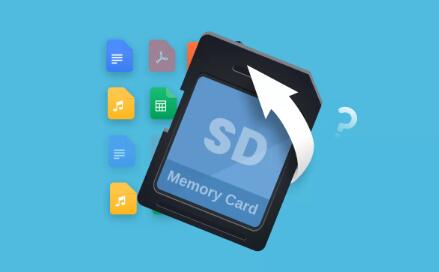Losing images from an SD card can be distressing, especially when they capture precious moments. Fortunately, the data isn’t necessarily gone forever. Understanding how data recovery works and employing the right methods can help you retrieve those deleted images.
1. Data Deletion
1.1 How Data Deletion Works
When you delete a file from your SD card, it doesn’t immediately disappear. Instead, the space it occupies is marked as available for new data. Until new files overwrite this space, recovery is possible.
1.2 Types of Deletion
Soft Delete: Files are moved to the recycle bin or a temporary folder, making them easy to restore.
Hard Delete: Files are permanently removed from the recycle bin, but the data remains until overwritten.

2. Immediate Steps to Take
2.1 Stop Using the SD Card
As soon as you realize images are deleted, stop using the SD card. Continued use increases the risk of overwriting the deleted files, making recovery much more challenging.
2.2 Check Backup Options
Before diving into recovery software, check if you have backups:
Cloud Services: Platforms like Google Photos, Dropbox, or OneDrive may have backed up your images.
Local Backups: If you’ve transferred images to a computer or external drive, check there.
3. Using Recovery Software
3.1 Selecting the Right Software
Panda Assistant is a powerful data recovery software designed to help users effortlessly retrieve lost or deleted files from various storage devices, including SD cards, external hard drives, and USB drives. With an intuitive interface, Panda Assistant caters to users of all skill levels, making data recovery accessible and straightforward.
The software employs advanced scanning algorithms that thoroughly search for recoverable files, ensuring you have the best chance of retrieving your important data. Whether files were accidentally deleted, lost due to formatting, or corrupted, Panda Assistant can handle a wide range of data loss scenarios. It supports numerous file types, including documents, images, videos, and more.
One of Panda Assistant’s standout features is its ability to preview files before recovery, allowing users to confirm their selection and avoid unnecessary restores. This feature not only saves time but also enhances the overall recovery experience. Additionally, Panda Assistant offers customizable recovery options, enabling users to target specific folders or file types for more efficient results.
3.2 Downloading and Installing
Download the chosen software from the official website.
Install it on a different drive to avoid overwriting data on the SD card.
3.3 Running the Recovery
Insert the SD Card: Use a card reader if necessary.
Open the Recovery Software.
Select the SD Card: Choose the SD card from the list of available drives.
Initiate the Scan: Opt for a quick scan first; if unsuccessful, run a deep scan.
Preview Recoverable Files: Most software allows you to preview images before recovery.
Recover Selected Files: Choose the images you want to recover and select a safe location (not on the SD card) to save them.
4. Manual Recovery Methods
4.1 Using File History (Windows)
If you’re using Windows and have enabled File History, follow these steps:
Connect the SD Card to your computer.
Right-click on the folder where the images were stored.
Select “Restore previous versions.”
Choose a version before the deletion and click Restore.
4.2 Using Time Machine (Mac)
If you’re on a Mac and use Time Machine:
Connect the SD Card to your Mac.
Open the folder where your images were stored.
Click the Time Machine icon in the menu bar and select Enter Time Machine.
Browse to find the deleted images and click Restore.
5. Advanced Recovery Options
5.1 Professional Data Recovery Services
If software recovery methods fail, consider professional services. They have specialized tools and expertise to recover data, although this can be expensive.
5.2 DIY Techniques
For advanced users, DIY recovery techniques might involve using command line tools to attempt recovery. This requires technical knowledge and is generally not recommended for average users due to the risk of further data loss.
6. Preventing Future Data Loss
6.1 Regular Backups
Implement a regular backup strategy to ensure your images are safe. Use cloud services or external drives to create redundant copies of your data.
6.2 Safe Removal Practices
Always safely eject your SD card before removing it from devices. This minimizes the risk of file corruption and data loss.
6.3 SD Card Maintenance
Keep your SD card in good condition:
Avoid exposing it to extreme temperatures or moisture.
Regularly check for errors using tools like Windows Check Disk or Mac’s Disk Utility.
About us and this blog
Panda Assistant is built on the latest data recovery algorithms, ensuring that no file is too damaged, too lost, or too corrupted to be recovered.
Request a free quote
We believe that data recovery shouldn’t be a daunting task. That’s why we’ve designed Panda Assistant to be as easy to use as it is powerful. With a few clicks, you can initiate a scan, preview recoverable files, and restore your data all within a matter of minutes.
Subscribe to our newsletter!
More from our blog
See all postsRecent Posts
- How to recover a deleted slide in powerpoint? 2025-02-27
- How to recover deleted capcut videos? 2025-02-27
- How to recover a file deleted from a shared drive? 2025-02-27










